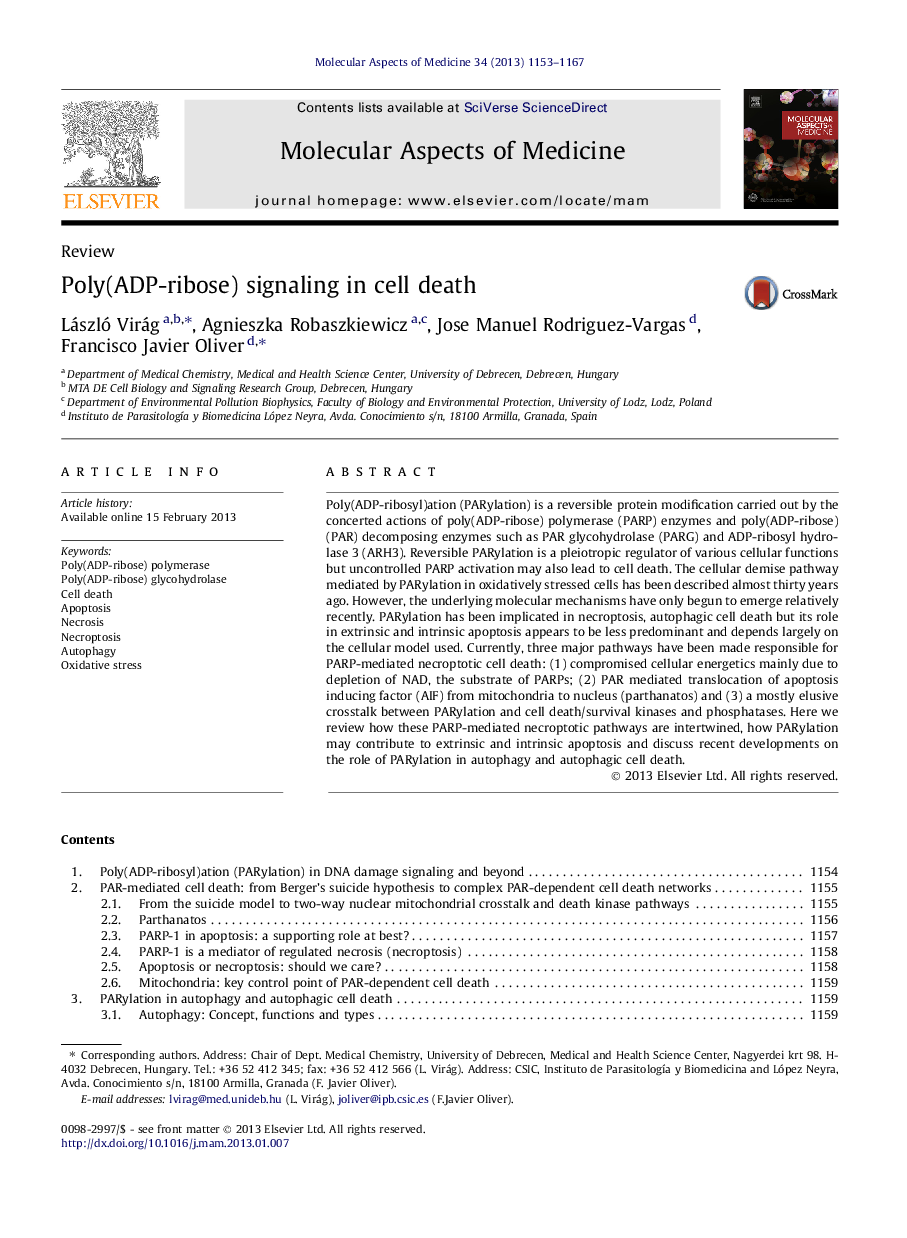| Article ID | Journal | Published Year | Pages | File Type |
|---|---|---|---|---|
| 1995699 | Molecular Aspects of Medicine | 2013 | 15 Pages |
Poly(ADP-ribosyl)ation (PARylation) is a reversible protein modification carried out by the concerted actions of poly(ADP-ribose) polymerase (PARP) enzymes and poly(ADP-ribose) (PAR) decomposing enzymes such as PAR glycohydrolase (PARG) and ADP-ribosyl hydrolase 3 (ARH3). Reversible PARylation is a pleiotropic regulator of various cellular functions but uncontrolled PARP activation may also lead to cell death. The cellular demise pathway mediated by PARylation in oxidatively stressed cells has been described almost thirty years ago. However, the underlying molecular mechanisms have only begun to emerge relatively recently. PARylation has been implicated in necroptosis, autophagic cell death but its role in extrinsic and intrinsic apoptosis appears to be less predominant and depends largely on the cellular model used. Currently, three major pathways have been made responsible for PARP-mediated necroptotic cell death: (1) compromised cellular energetics mainly due to depletion of NAD, the substrate of PARPs; (2) PAR mediated translocation of apoptosis inducing factor (AIF) from mitochondria to nucleus (parthanatos) and (3) a mostly elusive crosstalk between PARylation and cell death/survival kinases and phosphatases. Here we review how these PARP-mediated necroptotic pathways are intertwined, how PARylation may contribute to extrinsic and intrinsic apoptosis and discuss recent developments on the role of PARylation in autophagy and autophagic cell death.
